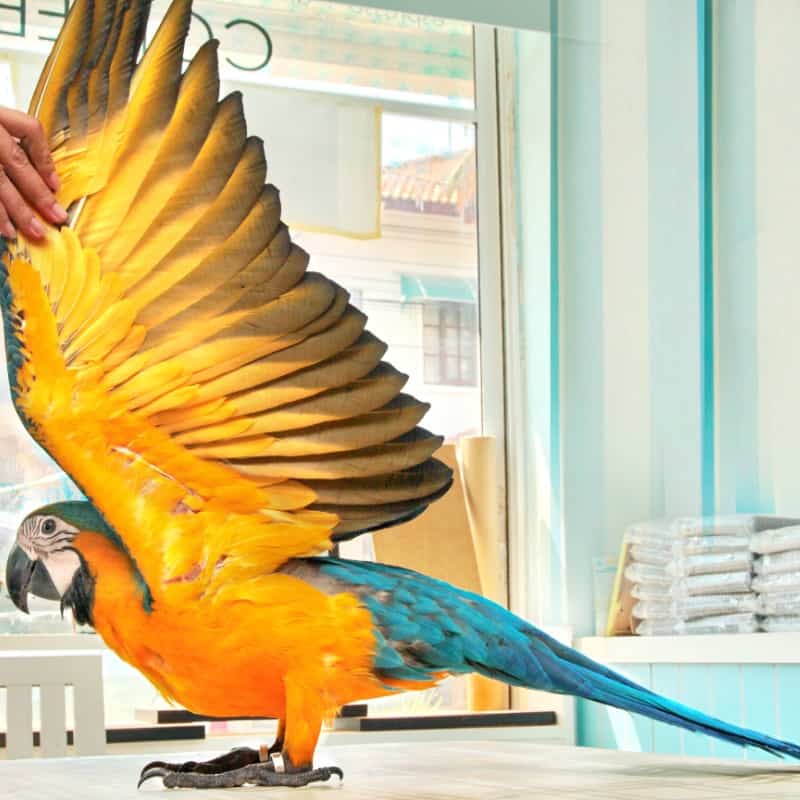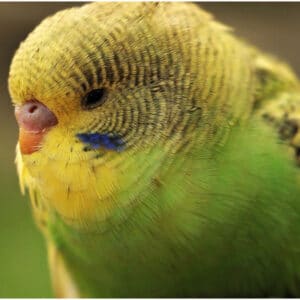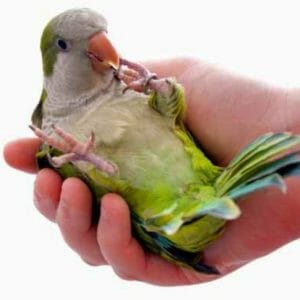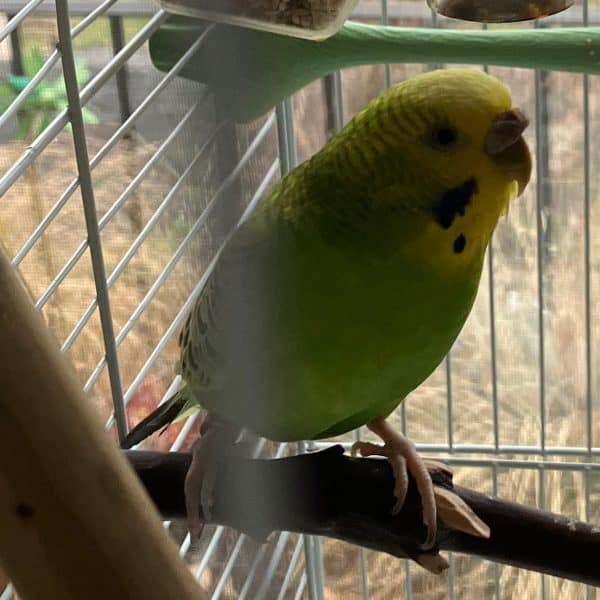
What is the Peril of Neglecting to Trim Your Pet Birds Wings?
Last Updated on by Catherine Tobsing
I came across a fascinating piece discussing the most perilous hazards linked to harm and fatality in parrots. At the forefront of this list was the peril of neglecting to trim your feathered companion’s wings.
It provided concrete instances such as the dangers of colliding with windows, mirrors, scorching utensils and fleeing away. To mitigate these risks, they strongly advised the practice of wing clipping for all pet birds.
In a previous encounter, I stumbled upon an intriguing piece where I learned that over 50% of lost avian creatures had their wings trimmed.
Additionally, it highlighted how winged birds, capable of full flight, displayed a greater rate of recovery. This advantage stemmed from their enhanced ability to evade predators, often leading to increased chances of survival until they could be found and brought back.
In my own experience, there have been a couple of instances where I narrowly escaped trouble when my winged companions had their feathers trimmed.
However, approximately two years ago, I decided to cease such practice as I realized that having clipped birds had made me too relaxed and created a distorted perception of safety. Owning birds capable of flight has significantly heightened my consciousness of potential hazards.
I own a total of five canines, and it seems like all my neighbors are equally fond of keeping both canines and felines as pets.
Keeping this in mind, any bird with its wings clipped would inevitably face a short lifespan if it accidentally escaped.
On the other hand, a bird capable of flying would have a fighting chance of surviving until I could retrieve it. Hence, I believe having a bird capable of flight is a preferable choice for my circumstances. Ideally, constructing an outdoor aviary and providing flight training would be the optimal solution for me.
I fully endorse the idea of preserving the ability of all captive parrots to fly. It is crucial that we move away from outdated mindsets of the past and embrace a modern approach to caring for, training, and managing companion parrots in the 21st century.
Parrots possess inherent biological tendencies that are essential for their survival and functioning. These tendencies are primarily rooted in their ability to fly. Whenever we attempt to alter the physical makeup of parrots or place unrealistic expectations upon them, it results in behavioral issues.
When we provide parrots with environments that allow them to socialize, fly, make sounds, mark territories, find food, reproduce, and behave in ways that align with their natural instincts, it shouldn’t be unexpected that we encounter minimal challenges in caring for them.
Throughout my extensive two-decade journey of caring for parrots and assisting owners for over the same period, I have observed that wing clipping, based on my personal accounts, remains the primary catalyst for a multitude of noteworthy behavioral health concerns. This, in turn, contributes significantly to the failure of parrots being properly nurtured within domestic environments.
I beg to differ from the widely held belief that wing clipping is merely a subjective preference.
Is it a matter of personal preference for the bird or the owner? If we truly promote healthy relationships between parrots and their owners, based on respect, trust, and accommodating their needs to the best of our abilities, then decisions should prioritize what is ultimately best for the bird. We should not compromise solely based on the constraints of the owner’s environment.
In the realm of companion parrot care in the 21st century, there exists a novel approach that fully recognizes and embraces the flight capabilities of these wonderful birds.
It inspires owners to cultivate the necessary skills for training and management, while also prioritizing the creation of a safe environment conducive to their natural flying instincts. Instead of modifying their wings, the key lies in altering our own expectations as pet owners and optimizing the surroundings we provide for them.
The reasoning and explanations given for trimming the wings are simply not relevant in today’s context. Colliding with windows, becoming trapped in unconventional spaces like toilets or frying pans, or accidentally escaping through open doors are all instances that highlight issues with managing a bird that can fly, rather than being indicative of flight itself.
I frequently liken the scenario to when your beloved dog dashes out of the gate and harmfully nips the postman’s leg. In such a situation, would you opt to restrain the dog’s legs to avoid a recurrence, or simply ensure that the gate is securely locked? Regrettably, parrots happen to be one of the few domesticated animals that still undergo socially accepted physical alterations.
In Australia, they have abandoned the practice of tail docking and ear trimming for dogs. Furthermore, in civil society, individuals with knowledge and awareness now deem it inhumane to defang venomous snakes that are kept as pets. These practices were once deemed acceptable but times have changed, rendering them no longer socially acceptable.
It’s truly unfortunate that certain individuals within the veterinary community persist in supporting the practice of wing-clipping and advocating for methods of handling and training that rely on dominance hierarchy. As a result, they inadvertently give a level of social justification to these practices.
Our utmost priority should be championing and actively working towards enhancing the education surrounding contemporary parrot ownership, with a forward-thinking mindset towards caring for these pets.
Whether you are a new parrot owner or an experienced enthusiast, this article can serve as a valuable resource in understanding the intricacies of keeping these magnificent birds.
When talking about flight and companion parrots, it is essential to first establish a clear differentiation between the terms flighted parrot and free-flighted parrot. This article solely delves into the ideology, training, and handling of flighted parrots – birds that possess the ability to fly but are confined indoors or within an appropriate flight enclosure.
Parrot owners must understand that responsible and ethical caretakers of flighted companion parrots acknowledge their own boundaries and their birds’ limitations. Additionally, they possess a keen awareness of managing numerous factors involved in caring for flighted birds. To achieve this, proper training and offering appropriate and secure housing are essential.
Our utmost concern lies in guaranteeing the well-being and security of our avian companions. To achieve this, we meticulously arrange their flight surroundings, aiming to ensure their safety and welfare are upheld at all times. Simultaneously, we take great measures to safeguard the diverse range of species and maintain biosecurity within our natural environment.
Therefore, we strictly prohibit any flighted parrot from venturing beyond the confines of a flight enclosure or other secure indoor flight space.
By following the aforementioned guidelines, one can guarantee that any potential dangers related to flying will be greatly reduced or entirely eliminated.
Throughout my extensive years of keeping flighted companion parrots, I have gained valuable insights into the significance of maintaining flight for our pet parrots. Additionally, my consultations with fellow parrot owners on behavior management have further confirmed the importance of flight for our feathered companions.
Consequently, I can now provide a comprehensive list of reasons that justify the necessity of allowing our parrots to enjoy their natural ability to fly.
A Better Bird Ep 13 How Bird Proof Is Your Home ~ Video
Parrots who maintain their ability to fly exhibit a notable rise in their functional behaviors, unlike parrots who are unable to fly. This increased engagement with their surroundings is often seen as a boost in their ‘confidence’, which I wholeheartedly concur with. Behaviors like searching for food and exploring their environment form the basis for better outcomes in terms of behavior among pet parrots.
The ability to fly greatly enhances a parrot’s capacity to exert control over its surroundings by offering increased opportunities for decision-making and personal choice. When bestowed with these freedoms, parrots exhibit improved coping mechanisms and display greater adaptability in navigating the restrictions of their captive habitat.
Stereotypical behaviors tend to decrease as individuals become more active in exploring and interacting with their surroundings, leading to a reduction in their development.
Although flying alone cannot completely eliminate behaviors like feather picking and other major behavioral health issues, it frequently plays a crucial role in managing such problems. Incorporating flight into a management plan can help prevent the development of these issues or decrease their frequency if they have already manifested.
Diminishing reliance: The subsequent stage within the spectrum of behavioral growth, facilitated by flight, entails diminishing dependence on the human caregiver. Parrots who are deprived of flight tend to heavily rely on their human caregiver for movement within their surroundings. It is worth noting that flight plays a crucial role in enabling parrots to be more physically engaged with their environment.
One could argue that such a circumstance could result in a certain level of autonomy, which has the potential to diminish behavioral issues linked to an excessive dependency on human caregivers for social and environmental interaction.
The relationship between a parrot and its owner can be strengthened by implementing better training methods and reinforcement schedules. Owning a parrot that can fly requires the owner to enhance their skill set in training and managing a pet that possesses independence and the ability to exert more influence over its surroundings. Based on my personal experience, this dynamic creates valuable opportunities for learning and developing a strong bond between the parrot and its owner.
When a pet parrot owner builds a connection with their bird, it requires trust and a positive history of reinforcement. It is a truly fulfilling and enriching experience to progress towards reducing the bird’s over-dependence and taking on a more prominent role as a teacher and a source of positive reinforcement in their environment.
Through my extensive hands-on involvement, I have come to acknowledge the invaluable role of flight in fostering the behavioral rejuvenation of numerous birds, specifically those afflicted with feather-picking tendencies.
Constructing safe and secure outdoor flight enclosures has frequently arisen as a necessity to amplify the potential for functional behavior and expand the environmental scope. By providing ample outdoor flight space, the occurrence of behavioral health issues can be significantly minimized or eradicated altogether. Therefore, I highly urge individuals who own parrots to contemplate the creation of a protected and reliable outdoor flight enclosure for their cherished avian companion.
Being involved in the design of enclosures for a select group of committed clients has allowed me to witness a remarkable transformation in the experiences available to their parrots. This has been an incredibly rewarding journey to be a part of.
Rapid identification of changes in a parrot’s physical well-being is of utmost importance as it greatly influences the swift management of potentially fatal diseases.
It is undeniable that a parrot that includes flying as a regular part of its daily behavior will provide a much clearer and more easily noticeable sign of any changes in its health condition compared to a parrot that has its wings clipped or is unable to fly. Parrots that cannot fly already exhibit a relatively low level of active behavior and are likely to remain inactive for extended periods throughout the day, unlike their flighted counterparts.
Wing-clipped birds might consume less food on a daily basis compared to flighted parrots. Moreover, wing-clipped birds tend to have extended periods of rest, and their vocal behaviors may not be as functional as those observed in flighted birds.
Failure to identify early signs of illness, such as decreased activity, disinterest in enrichment activities, and lack of curiosity toward new objects, may occur when a keeper fails to acknowledge these symptoms.
When I take my morning stroll around the birdcages, it doesn’t take long for me to notice if any of my parrots are less than their usual selves. I can tell by their behavior, how eager they are to land on my hand and move about in their space.
An adventurous endeavor awaits those who choose a feathered companion. Those who take on the responsibility of caring for a companion parrot in the modern age must rise to the occasion, ensuring that future generations of parrot carers understand and accommodate the natural ability of flight in these birds.
Written and approved by the Windy City Parrot content team.
Author Profile
Latest entries
 The Traveling BirdJune 26, 2025Can You Name 5 Parrot Species That Are Living Wild in the USA?
The Traveling BirdJune 26, 2025Can You Name 5 Parrot Species That Are Living Wild in the USA? Bird BehaviorJune 26, 2025How is it Parrots Are Problem Solvers Social Animals and Even Use Tools?
Bird BehaviorJune 26, 2025How is it Parrots Are Problem Solvers Social Animals and Even Use Tools? Bird & Parrot AnatomyJune 25, 2025How a Tiny Chemical Modification Makes Parrots Nature’s Living Paintings
Bird & Parrot AnatomyJune 25, 2025How a Tiny Chemical Modification Makes Parrots Nature’s Living Paintings PigeonsJune 20, 2025How Do Parrots Thrive in Cities Outside Their Native Habitats?
PigeonsJune 20, 2025How Do Parrots Thrive in Cities Outside Their Native Habitats?


